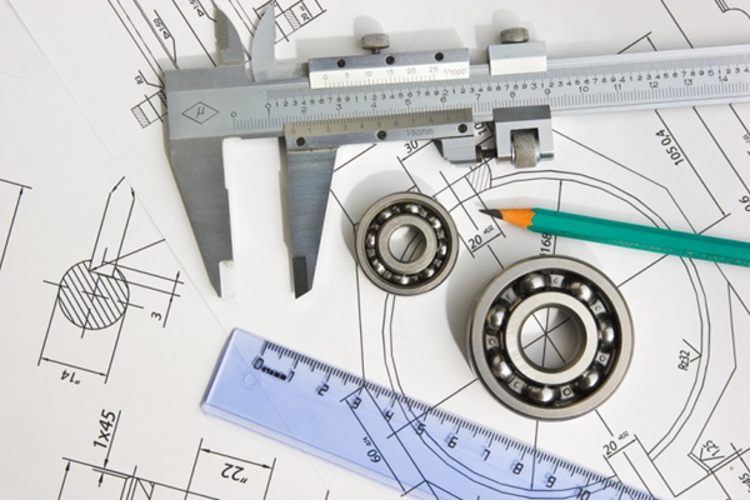As the field of robotics continues to evolve and advance, so too does the need for accurate and precise engineering drawings. Mechanical engineering drawings are essential in conveying information about a robotic device or system so that it can be manufactured correctly. This information typically includes dimensions, tolerances, assembly instructions, and material specifications. Without engineering drawings, it would be very difficult, if not impossible, to build many of the sophisticated robots that are used today.
What is an engineering drawing?

An engineering drawing is a type of technical drawing that is used to convey information about an engineered product or system. It can be thought of as a graphical representation of a design or specific component thereof. Engineering drawings are typically created using computer-aided design (CAD) software, although they can also be created by hand.
The importance of engineering drawings in robotics
Engineering drawing assembly are important for robotics because they provide a detailed, step-by-step guide of how to build a robot. This is essential for ensuring that each robot is built correctly and performs as intended. Without engineering drawings, it would be much more difficult to create robots that meet the high standards required for use in many industries.
They are also important for troubleshooting and repairing robots, as they can help to identify the root cause of any problems.
In summary, engineering drawings play a vital role in the design and manufacture of robots and are essential for ensuring that these machines operate correctly and reliably.
How engineering drawings are used in robotics?
Robotics engineering is a subfield of mechanical engineering and electrical engineering that deals with the design, construction, operation, and application of robots. Robotics engineers are responsible for the development and improvement of robots used in both industrial and domestic settings. Robotics engineering drawings are essential for the creation of these machines.
Robotics engineering drawings are typically created using computer-aided design (CAD) software. These drawings provide detailed instructions on the dimensions, components, and assembly of the robot. Robotics engineers use these drawings to build and test prototypes of their designs.
One of the most important aspects of robotics engineering is creating accurate and precise drawings. Inaccurate or imprecise drawings can lead to faulty prototypes and ultimately, unsafe and unreliable robots. As such, robotics engineers must have a strong understanding of both CAD software and engineering principles.

Robotics engineering drawings are used in a variety of settings, including:
Manufacturing: Robotics engineering drawings are used to create the blueprints for assembly line robots. These drawings help ensure that the robots are assembled correctly and can perform their tasks properly.
Healthcare: Robotics engineering drawings are used to create surgical robots. These drawings help ensure that the robots are safe and effective for use in operating rooms.
Domestic: Robotics engineering drawings are used to create domestic robots, such as vacuum cleaners and lawnmowers. These drawings help ensure that the robots are safe and effective for use in homes.
Some challenges associated with engineering drawings in robotics
One challenge associated with engineering drawings in robotics is the need for accuracy. Robotics technology is constantly evolving and improving, which means that the drawings used to create robotic components and systems must be accurate in order to ensure that the finished product meets the required specifications. This can be a challenge, particularly when new technologies are being used or when changes are made to existing systems.
Another challenge associated with engineering drawings in robotics is the need for precision. Robotics components and systems are often required to operate within very tight tolerances in order to function correctly. This means that the engineering drawings used to create them must be highly precise in order to avoid any errors that could lead to problems during manufacture or assembly.
Also, engineering drawings in robotics are the need to be clear and concise. Robotics systems can be very complex, and the drawings used to represent them must be easy to understand in order to avoid any mistakes during construction or assembly. This can be difficult to achieve, particularly when dealing with large and complex systems.

Finally, robotics is the needs to stay up-to-date. As mentioned above, robotics technology is constantly evolving and improving. This means that the engineering drawings used to create robotic components and systems must be regularly updated in order to keep pace with the latest developments. Failure to do so can lead to delays in construction or assembly, or even to the use of outdated or obsolete components.
Conclusion
Engineering drawings are essential for the development of safe and reliable robots. Robotics engineers must have a strong understanding of both CAD software and engineering principles in order to create accurate and precise drawings.
Engineering drawings are used in a variety of settings, including manufacturing, healthcare, and domestic settings. Some challenges associated with engineering drawings include the need for accuracy, precision, clarity, and conciseness.
Additionally, it is important for engineering drawings to stay up-to-date with the latest developments in robotics technology. Hope you have a better understanding of the importance of engineering drawings in robotics.














